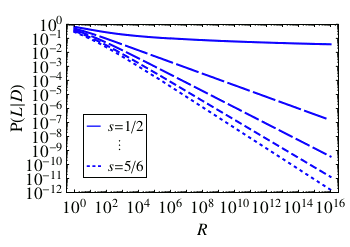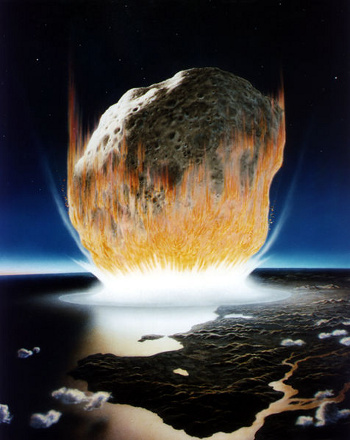
Survival of the Smartest
April 17, 2013 Creative thoughts often come to individuals while they are in a semi-sleeping state, as when just going to sleep, daydreaming, or just spacing-out from sheer boredom. A recent book,[1] "Finding The Next Steve Jobs: How to Find, Hire, Keep and Nurture Creative Talent," coauthored by video game pioneer, Nolan Bushnell, recalls one innovation that Steve Jobs initiated while working at Atari. He allowed employees to take short naps during working hours to stimulate creativity when they were awake. I was in space-out mode in 1980 on a taxi trip from the airport to a conference hotel in Dallas, Texas. The cab stopped at a traffic light in back of a package delivery truck (a brown truck, so you'll guess the company). I noticed a number on the back of the truck, which appeared to be the serial number of the truck. I started to think about how many such trucks there might be, based on this single observation. A crazy thought? Well, physicists have a way of making sense out of crazy things. There's quantum mechanics as one example. In fields such as particle physics, where your data can be understood only by statistical inference, the guiding principle is the confidence interval. When hunting for things like the Higgs Boson, particle physicists require their statistics to be at the five sigma level.[2] This means there's slightly better than a million to one chance that nature had just organized her random variations to make it appear that there really is a Higgs Boson when none exists. Five sigma gives us 99.99994% confidence that what we've seen is really there. |
| The normal distribution in which μ is the mean, and σ is the standard deviation. Most of the area under the curve falls in the two-sigma interval between ±2σ. (Via Wikimedia Commons.) |
• Impact by an asteroid or comet.NASA, for example has been taking asteroid tracking very seriously. We should start debating whether we should stop the technological singularity. Taking a plot line from Kurt Vonnegut's novel, "The Sirens of Titan," this singularity might be humanity's purpose. A more optimistic scenario for human existence has just been published on arXiv by scientists from Oxford University (Oxford, UK) and Tufts University (Medford, MA).[5] Instead of just focusing on humans, this study considered the fraction of civilizations in the universe which are long-lived. The "universal doomsday" argument argues that there should be very few since, we, ourselves, are not one of them. The study did a careful analysis of the universal doomsday argument, and the result was that longevity of a civilization is possible if the number of early existential threats is small.[5-6] Longevity is a relative term, since the study predicts just a small fractional chance (a few percent) that we will become a galaxy-colonizing civilization. The key is to devote technology to allay threats such as those listed by Rees, and to actually colonize the galaxy. A distributed population has a better chance for survival of at least some members.
• A particle accelerator might create an Earth-swallowing black hole.
• Global warming.
• Worldwide pandemic, perhaps caused by a virus created by a terrorist organization.
• Artificial intelligence is created, and we reach technological singularity, when humans become irrelavant.
• A gamma ray burst.
• Nuclear holocaust.
• Overpopulation; although there's a feedback mechanism, famine, that limits population.
 | The survival probability is graphed as a function of the ratio R = NL/NS, where NL and NS are the populations of long- and short-surviving civilization. The s values correspond to the number of threats (see reference).[5] (Fig. 6 of ref. 5, via ArXiv.) |
References:
- Nolan Bushnell and Gene Stone, "Finding the Next Steve Jobs: How to Find, Hire, Keep and Nurture Creative Talent," Net Minds Corporation (March 26, 2013), ISBN-13: 978-0988879515, 280 pp. (via Amazon).
- David L. Chandler, "Explained: Sigma," MIT News Office, February 9, 2012.
- J. Richard Gott, III, "Implications of the Copernican principle for our future prospects," Nature, vol. 363, no. 6427 (May 27, 1993), pp. 315-319.
- Martin Ress, "Our Final Hour: A Scientist's warning," Basic Books (April 13, 2004, ISBN-13: 978-0465068630), 240 pp. (via Amazon).
- Austin Gerig, Ken D. Olum and Alexander Vilenkin, "Universal Doomsday: Analyzing Our Prospects for Survival," arXiv Preprint Server, March 19, 2013.
- Doomsday Recalculation Gives Humanity Greater Chance of Long-Term Survival, The Physics arXiv Blog, March 21, 2013.
- David L. Chandler, "Explained: Sigma," MIT News Office, February 9, 2012.
